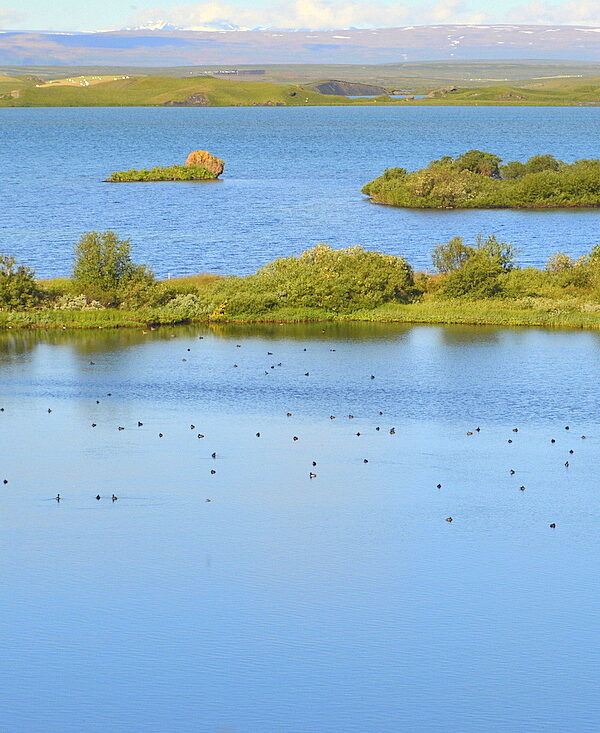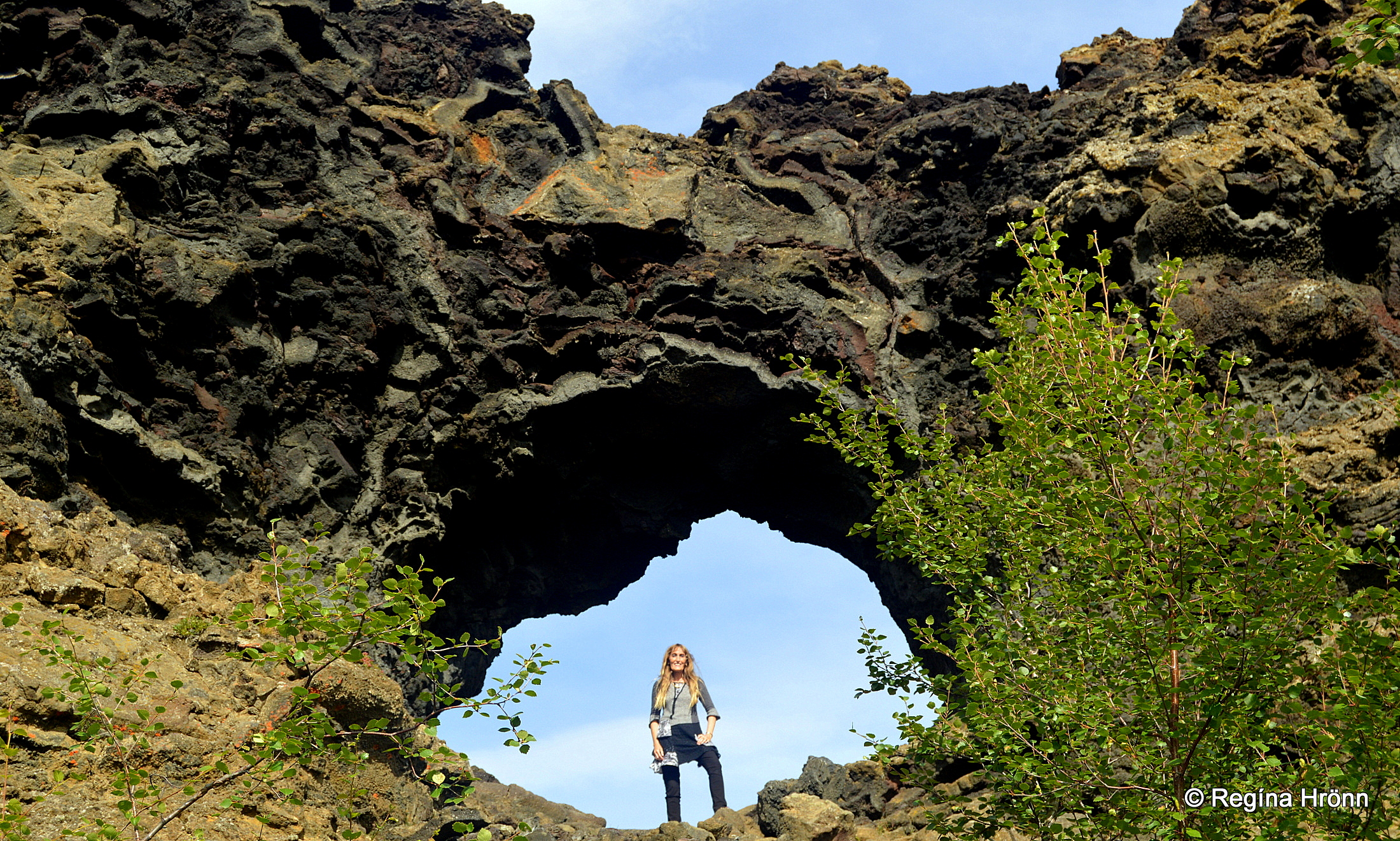
At Dimmuborgir
In my last travel-blog we visited Húsavík – the Whale Watching Capital of Iceland and in this travel-blog I am going to show you some of the main attractions at Mývatn, which is another major stop on the Diamond Circle.
Mývatn, like Jökulsárgljúfur canyon, is a true geological wonderland.
Here you will find lava pillars in abundance, pseudocraters, Dimmuborgir – the Dark Cities (Dark Castles), a spectacular cave in which you will find the biggest ice sculptures inside a cave in Iceland, see the spot where the lava flood stopped right by a church, and bathe in the Blue Lagoon of the North, to name just a few of the many sights.
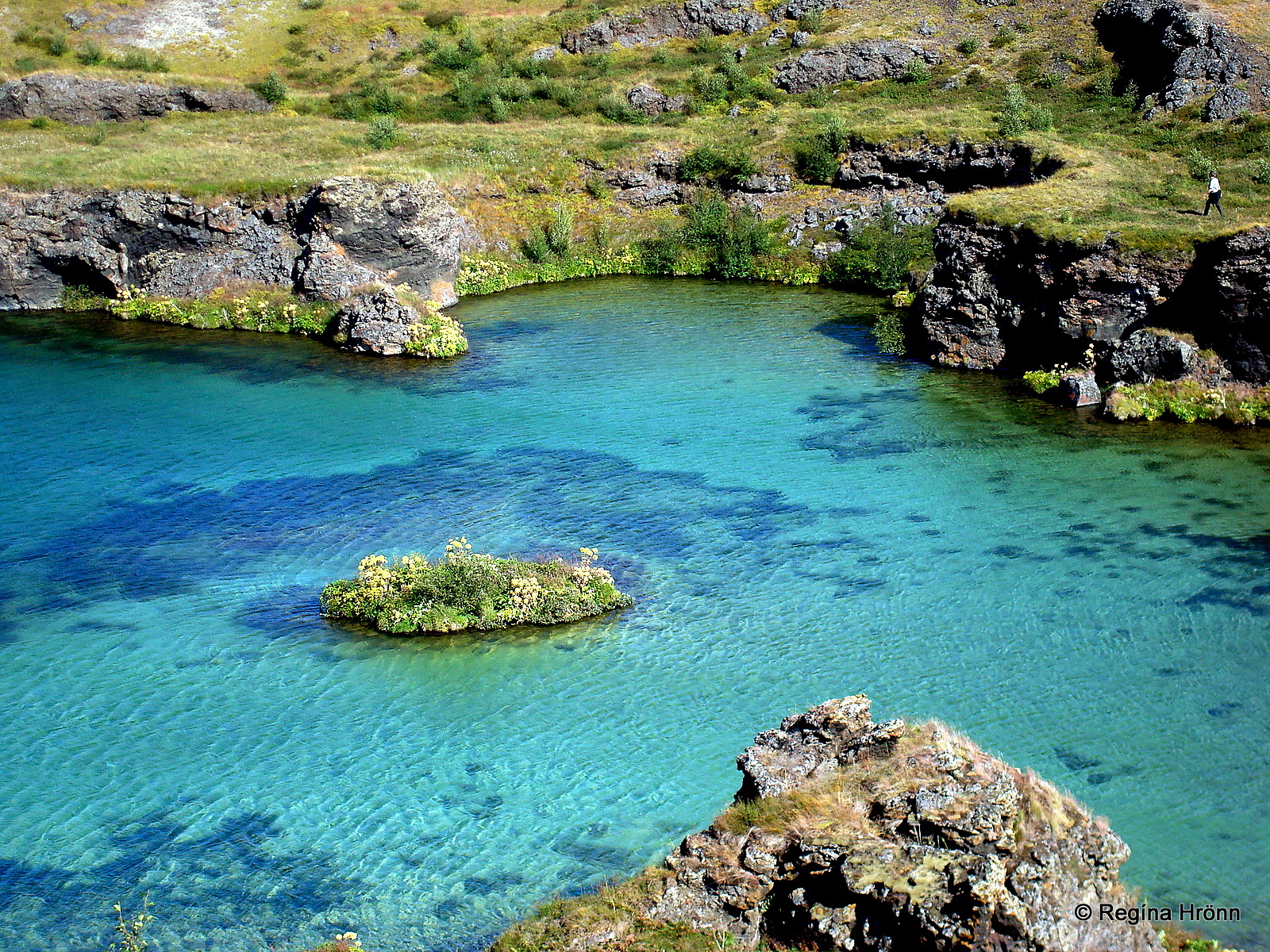
At Höfði
The Mývatn, and Krafla areas, sit along the volcanic zone of the Mid-Atlantic Ridge, and all around you, you can see how the landscape was formed by volcanic eruptions.
Lake Mývatn and the ducks
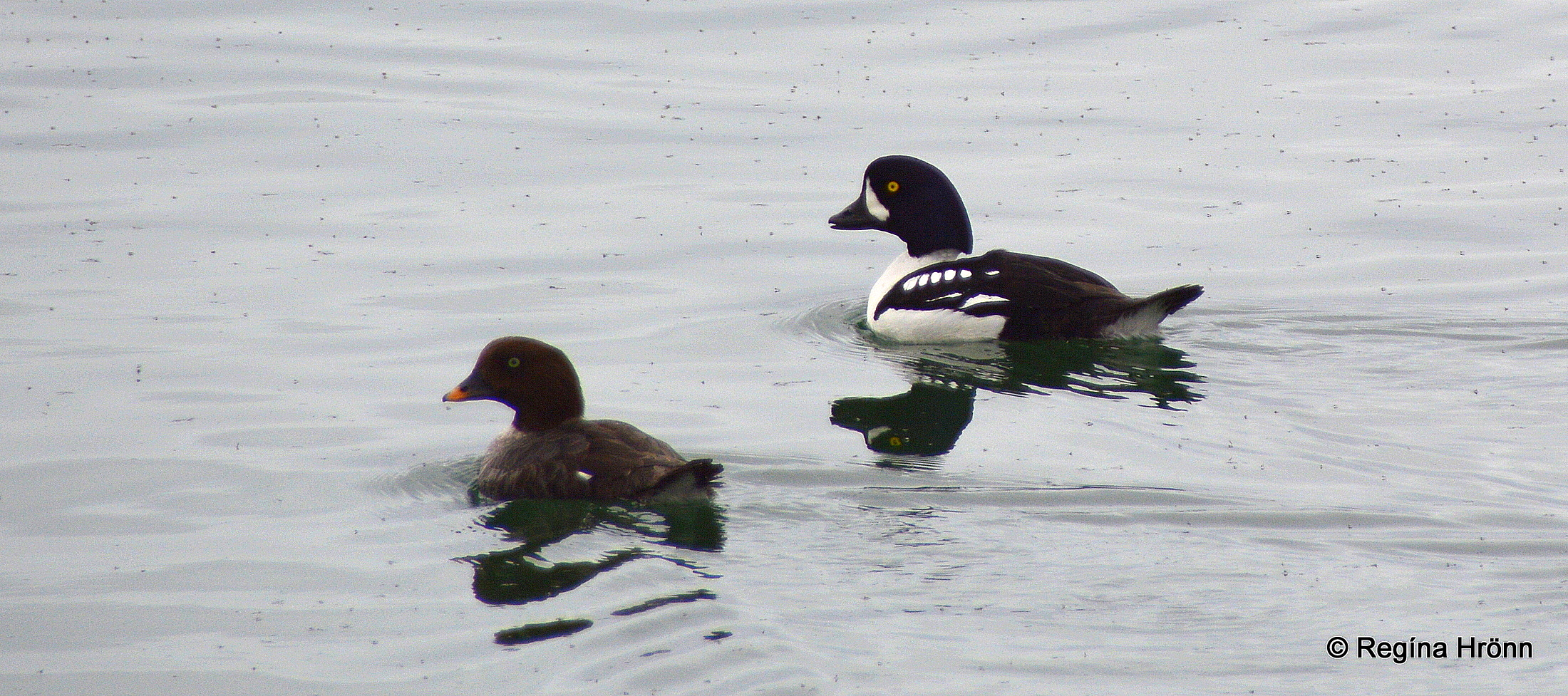
Barrow’s goldeneye is the signature bird of Mývatn
Lake Mývatn, Iceland’s 4th largest lake, approximately 37 km2, was created some 2,300 years ago in a basaltic lava eruption.
Lake Mývatn literally means the Midge lake, but the midge is the base of the ecosystem of Lake Mývatn. This means that Lake Mývatn is filled with trout and lake-char and here you will find ducks and waterfowl in abundance.
The lake is 2.5 – 4 meters deep and dotted with some 50 islands. And in the summertime, it is also dotted with thousands upon thousands of ducks, and these ducks when they gather around make the lake almost look black, as you can see in my photo below.
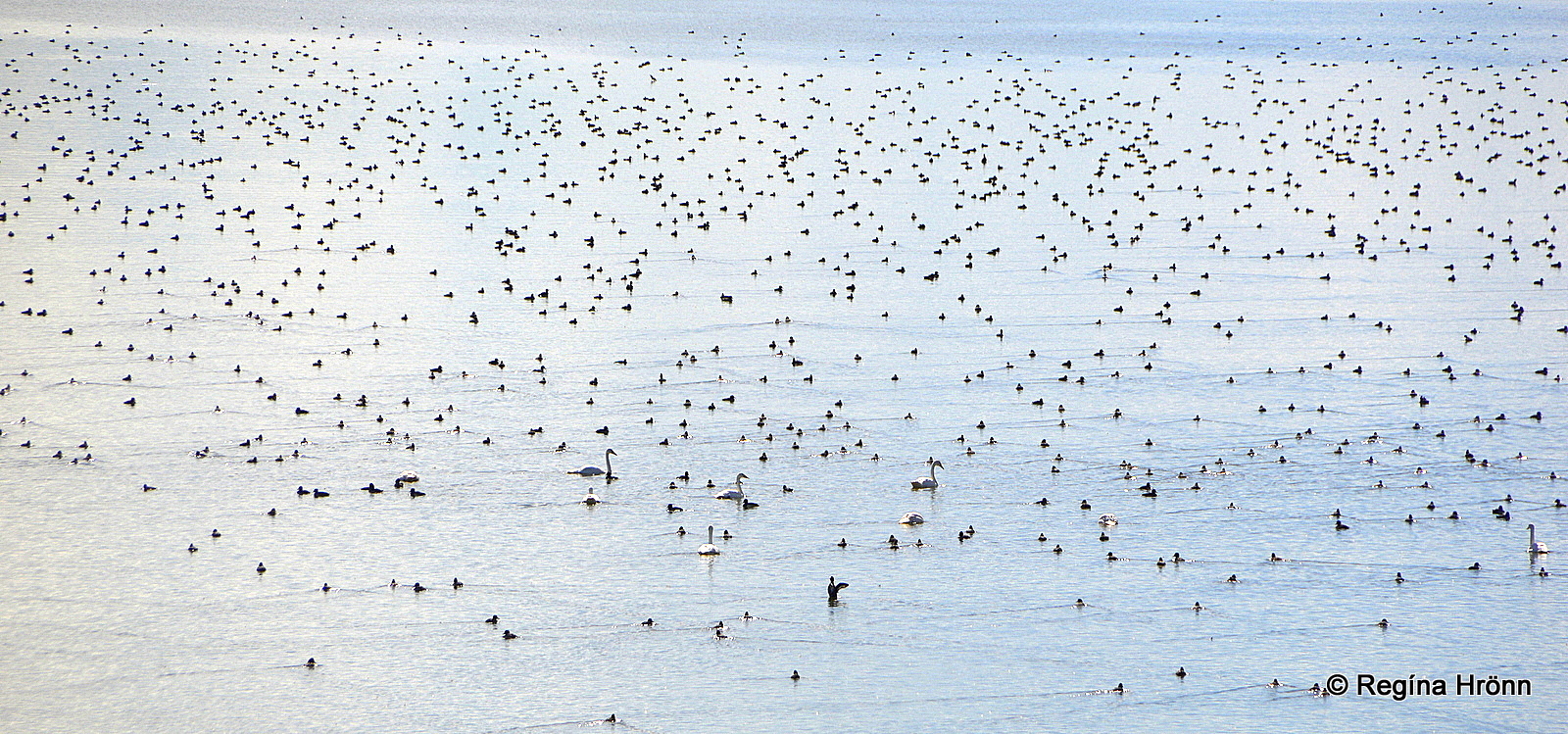
Thousands of ducks and swans on Lake Mývatn
On and around this beautiful lake birdlife is very diverse, and in this area, you will see a myriad of ducks and other aquatic birds.
In fact, here at Lake Mývatn and Laxá river, you will see one of the world’s richest populations of breeding aquatic birds (ref. UNESCO: Mývatn and Laxá) gathered in one place, with 15 out of 16 duck species in Iceland nesting regularly at Mývatn.
Only the Common Shelduck (brandönd) doesn’t nest here. So visiting this area is a feast for bird-watchers.
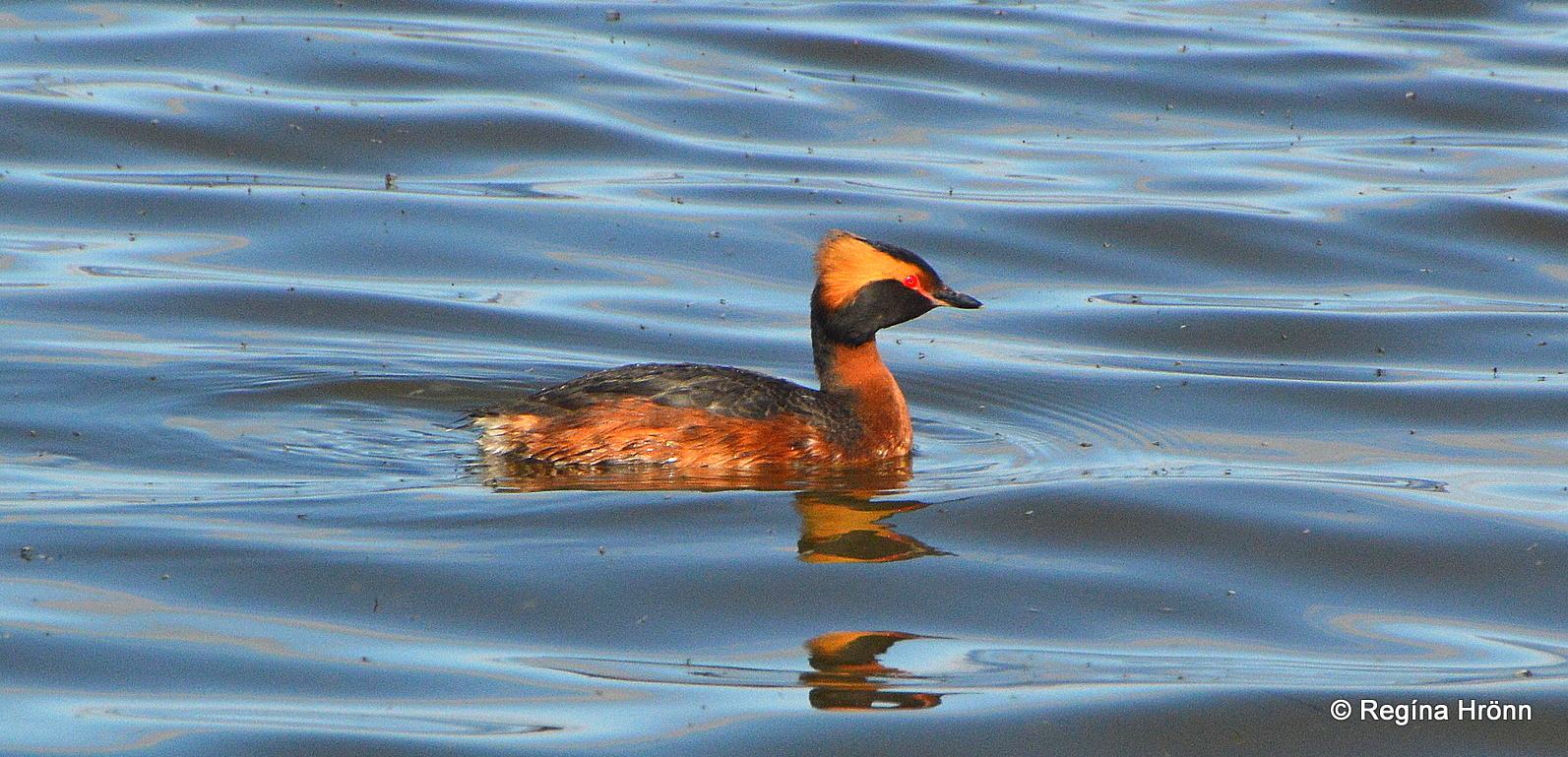
Flórgoði – the horned grebe swimming on Lake Mývatn
My photo above is of the Horned Grebe, which is not a duck species but a grebe, the only grebe which nests in Iceland. It is a very interesting-looking bird and its courtship dance is spectacular.
The Barrow’s goldeneye is the signature bird of Lake Mývatn, but the Horned grebe proudly shares that title (Ramý).
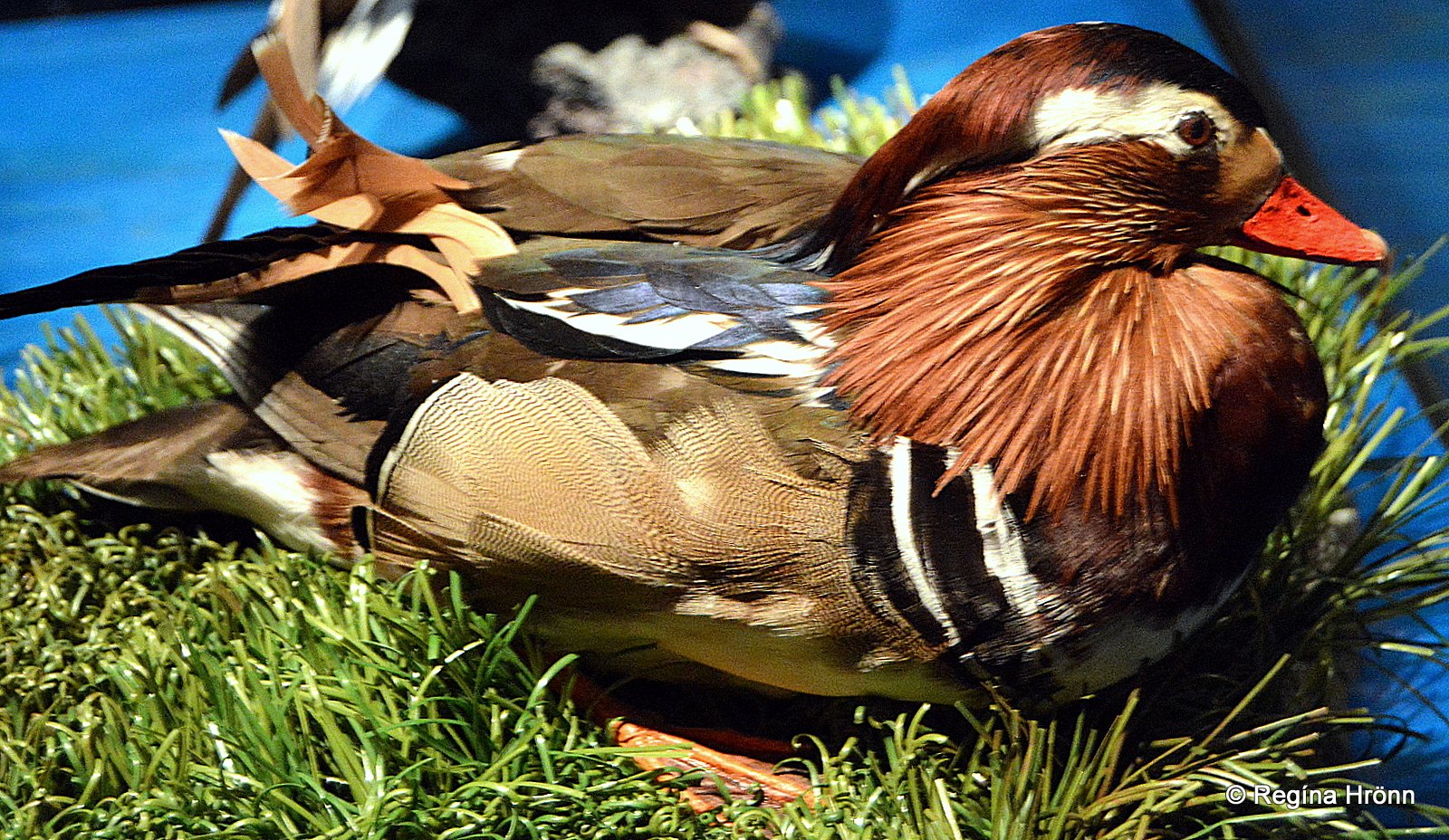
The Mandarin Duck at Sigurgeir’s Bird Museum at Mývatn
I have seen several duck species through the years swimming on the lake and in the Laxá river, but what I am most interested in seeing is the colorful Mandarin duck, which is a stray bird here in Iceland.
Unfortunately, this duck always evades me. Keep your eye out for that colorful bird during your visit 🙂
By Lake Mývatn, you will find the Sigurgeir’s Bird Museum or “Fuglasafn Sigurgeirs Stefánssonar”, where you will find stuffed specimens of all the breeding birds in Iceland bar one.
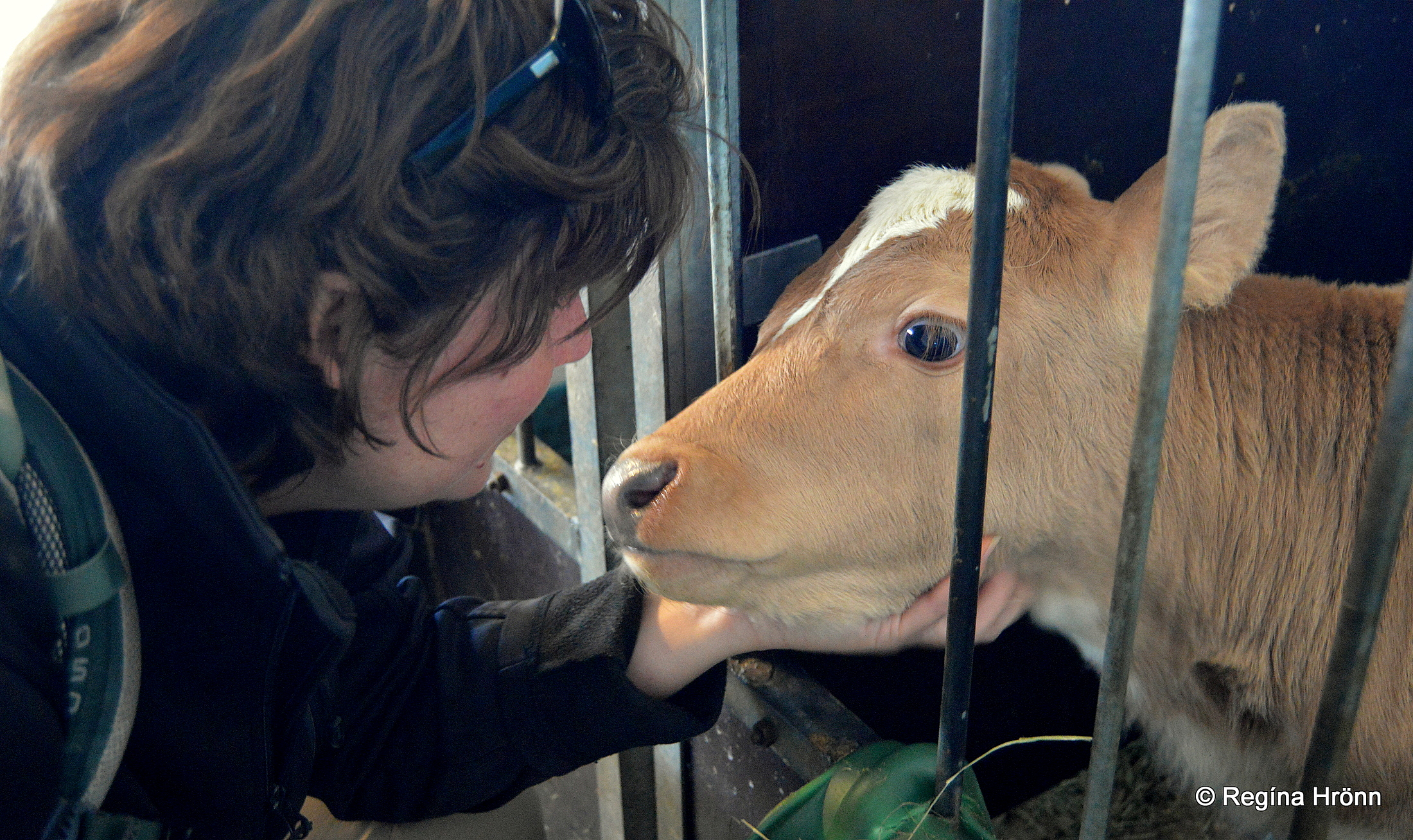
Visiting the calves at Vogafjós
Fishing is very good here and the farmers net a myriad of trout in the summertime, which they smoke and offer to their guests, f.ex. at Vogafjós restaurant.
Vogafjós is both a restaurant and a cowshed and you can pay the cows and calves a visit.
The farmers at Vogafjós cook their own rye bread in hot springs in this area, and eating dung-smoked trout from Lake Mývatn on top of rye bread cooked in a hot spring is eating as locally as possible 🙂
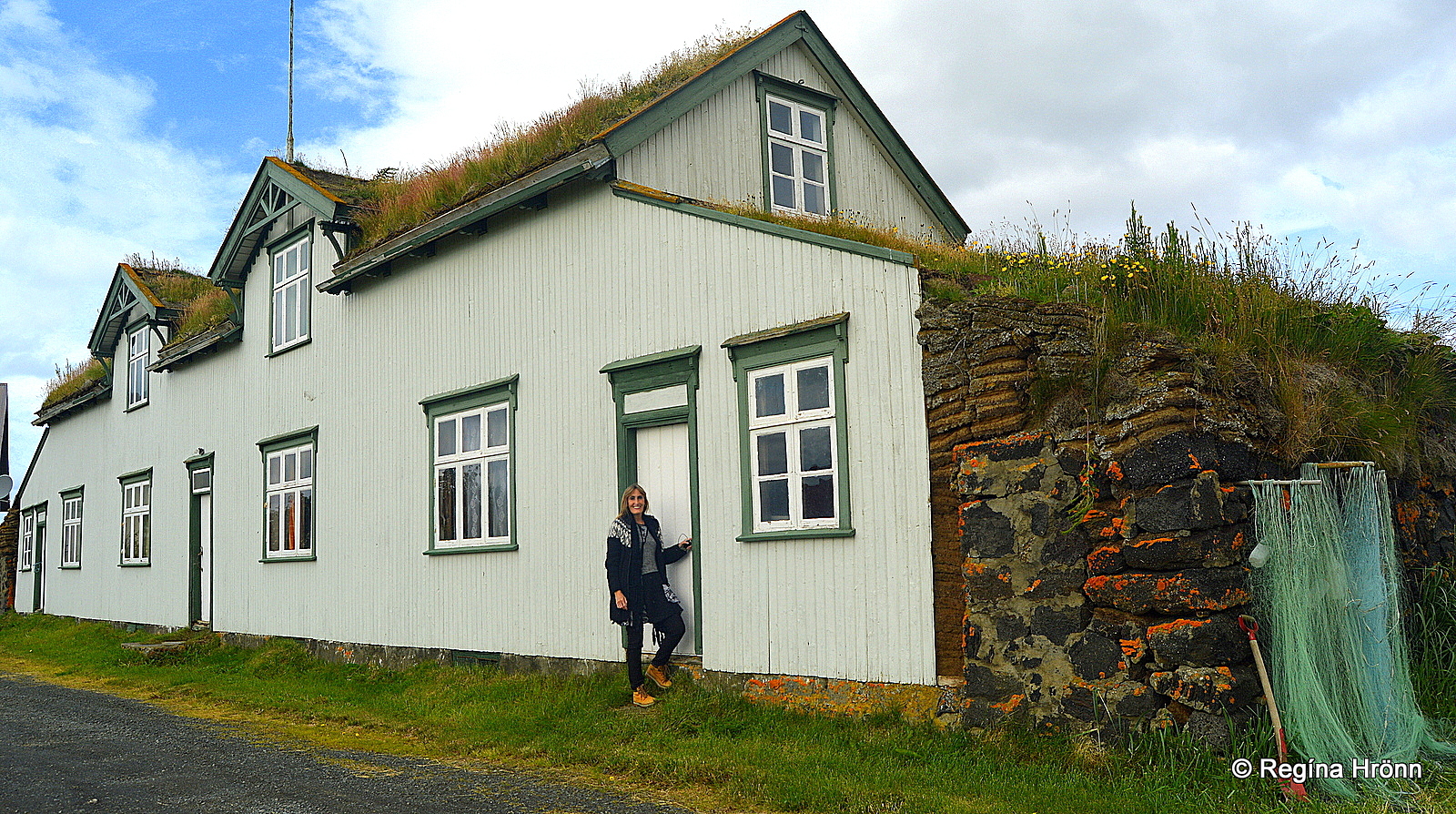
Grænavatn turf house at Mývatn
You will notice smoke coming from small turf huts where the trout is being dung-smoked.
These small turf huts are not the only turf structures at Mývatn as there is a large turf house dating back to 1913 at Grænavatn farm and lake.
The turf house belongs to Þjóðminjasafnið – the National Museum of Iceland, but is not a museum, like many of the other large turf houses.
In this area, a couple of Viking longhouses have been discovered, at Baldursheimar and at Hofstaðir, and there are for sure many more.
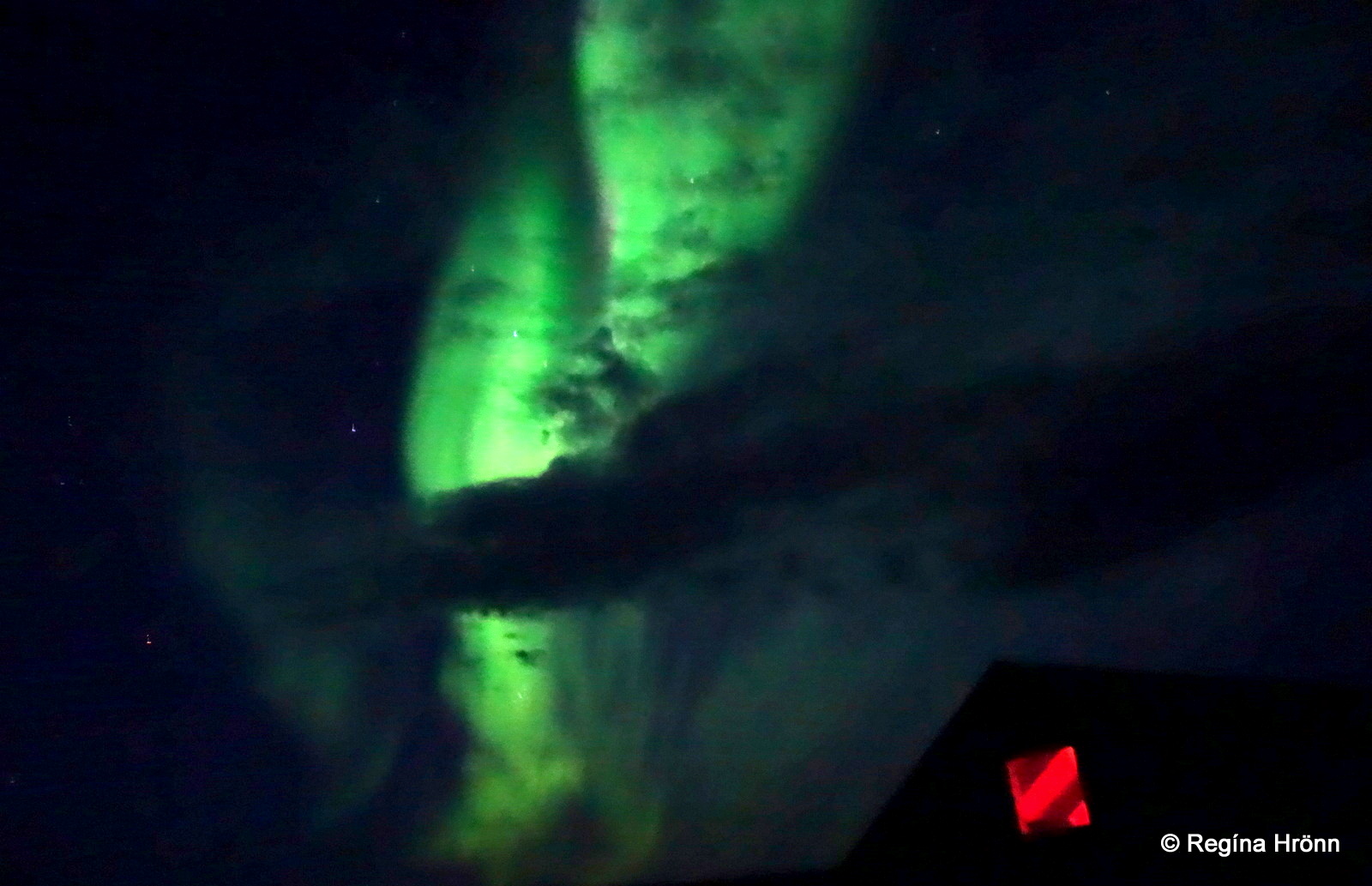
Northern Lights as seen at Mývatn
Mývatn is often referred to as the Northern Lights Capital of Iceland.
The Northern Lights can frequently be seen in Iceland from the end of August until mid-May. The most spectacular Northern Lights show I have witnessed in my country is at Mývatn, where the Northern Lights were visible for hours on end.
I took the photo above in Laxárdalur valley, which is right next to the Mývatn area.
Skútustaðagígar Pseudocraters

Skútustaðagígar pseuducraters
Skútustaðagígar pseudocraters are quite a geological wonder, only to be found above ground here in Iceland and on the planet Mars as far as I know.
Pseudocraters are not connected to a magma conduit, so they are also called rootless craters or rootless cones. They are created when hot lava flows over wet ground, causing steam to be trapped underneath.
The pressure from the steam caused explosions and these peculiar pseudocraters were formed.
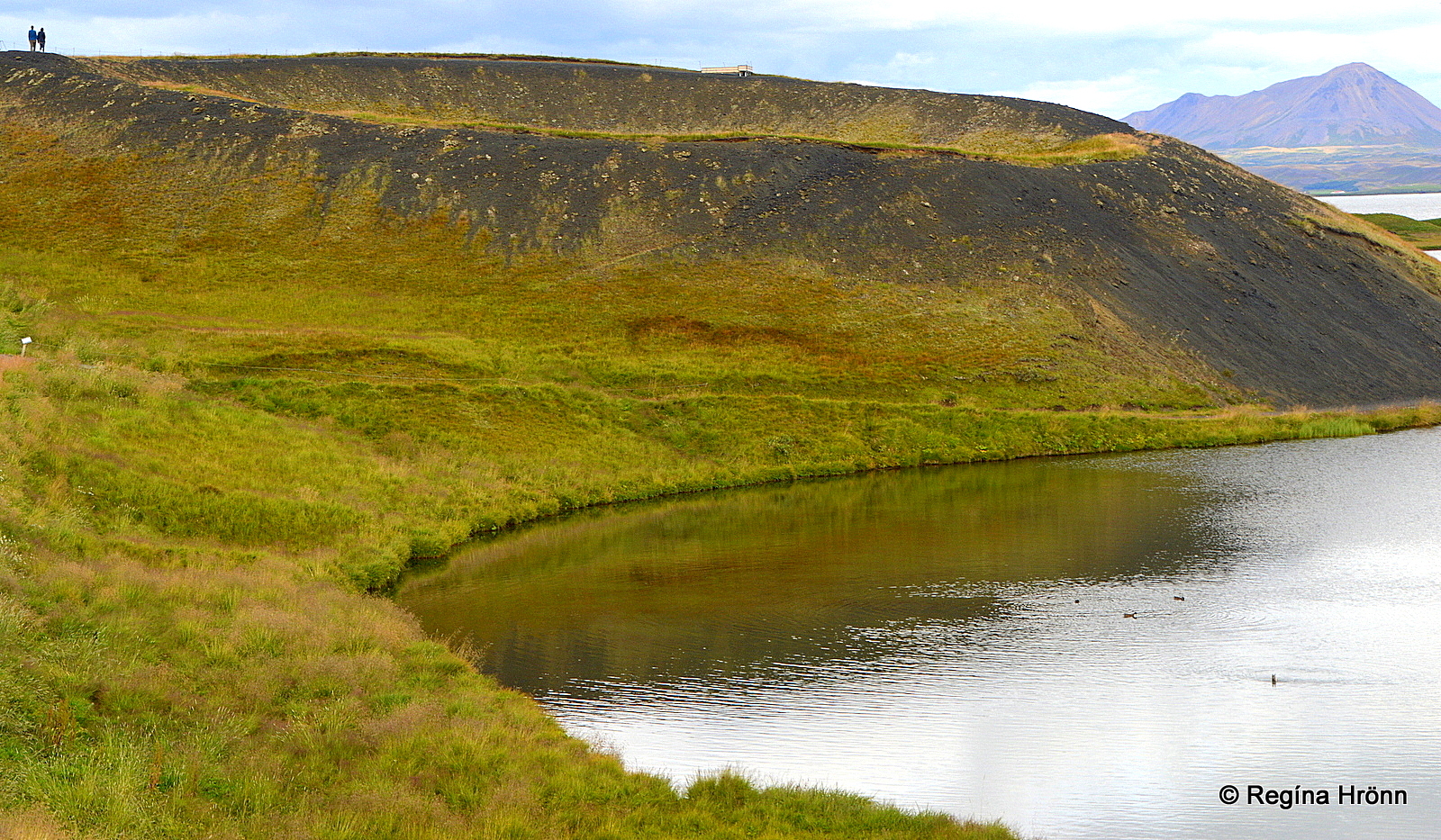
Skútustaðagígar pseudocraters
The lava flow from Lúdentarborgir and Þrengslaborgir crater row created Skútustaðagígar over 2,000 years ago along with Dimmuborgir and many other lava formations in the Mývatn area.
The lava flow, Yngra-Laxárhraun or the Younger Laxárhraun Lava, then continued into Laxárdalur and Aðaldalur valleys until it reached the sea at Skjálfandi bay.
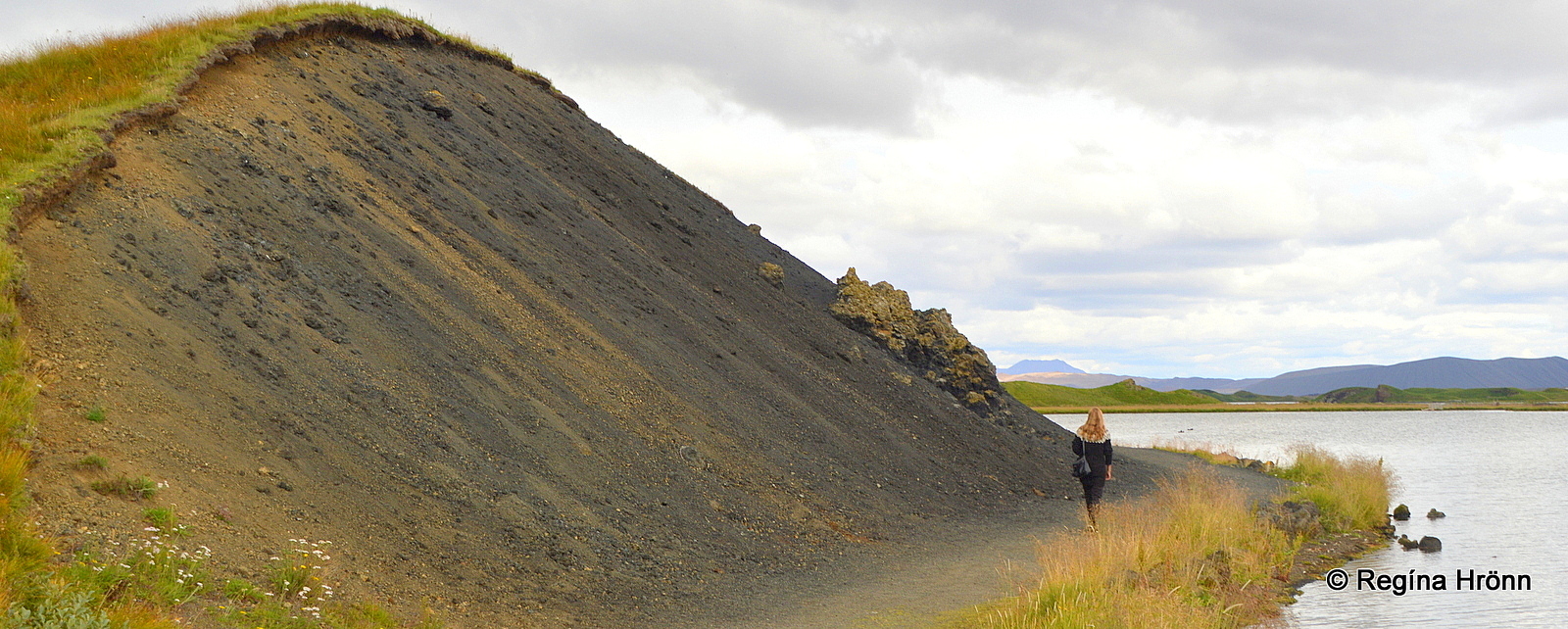
At Skútustaðir pseudocraters
The Older Laxárhraun lava, that preceded the Younger Laxárhraun Lava, as the name implies, came from a volcanic eruption in Ketildyngja shield volcano some 4,000 years ago. That lava flow formed a precursor to Lake Mývatn.
You can take a walk in between and on the rim of some of the pseudocraters from where there is a beautiful view of Lake Mývatn.
In 2021 the Mývatnsstofa information centre moved to Skútustaðir.
Kálfastrandarvogar cove
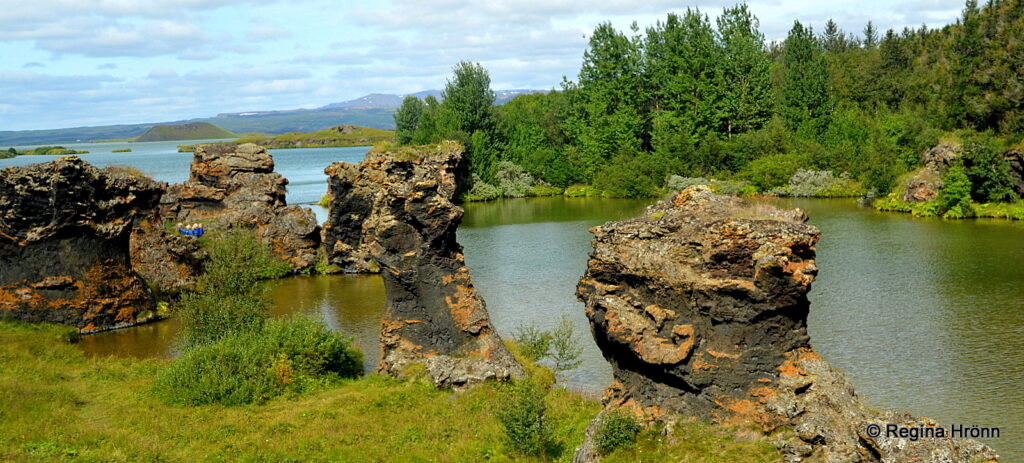
On Lake Mývatn, you will see a myriad of free-standing lava formations and pillars.
The most beautiful lava pillars are to be found at Kálfastrandarvogar cove. They are called Klasar and can be visited from both Kálfastandarvogar and from the Höfði peninsula.
A short hike will take you down to the lake where you can see the pillars up close. Parts of this area are now closed as this geological feature is too delicate and has to be preserved.
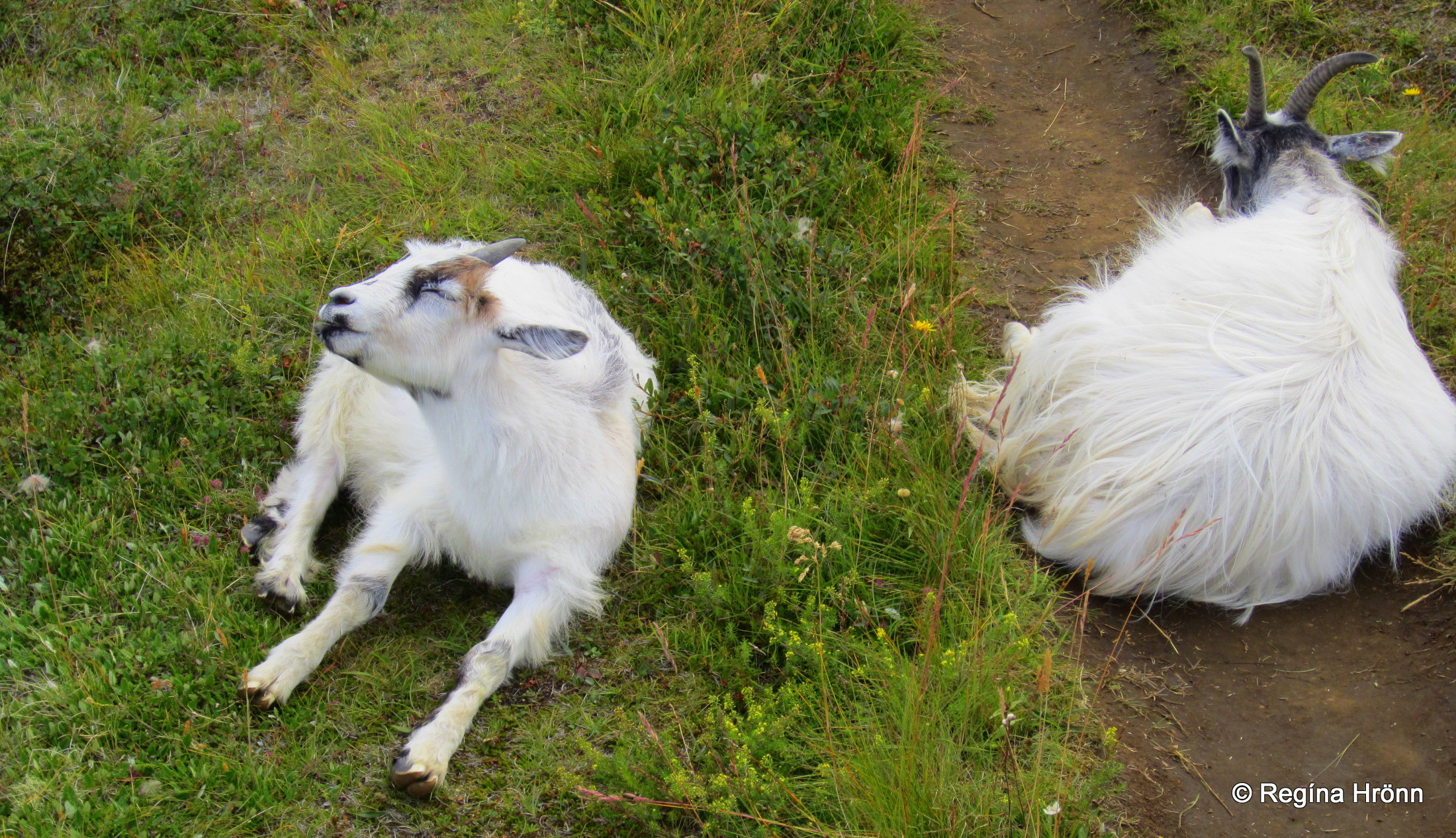
Goats resting on the path
But the hike is a circle through beautiful landscape and you might see some goats during your hike. Once goats were sleeping on the path and didn’t budge so we had to go around them.
They are very friendly creatures and allowed us to pet them 🙂
Höfði peninsula
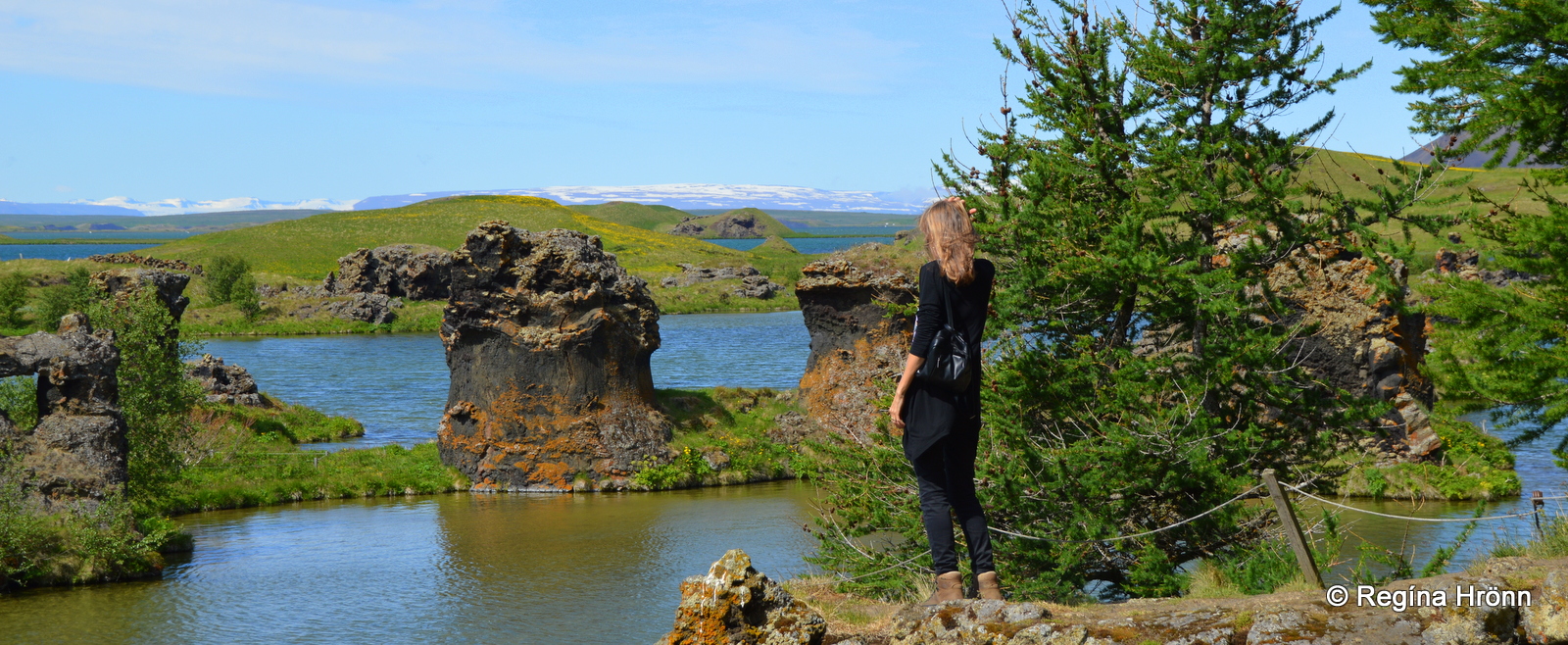
Admiring the view from Höfði
Höfði (Hafurshöfði) is a small and beautifully vegetated peninsula reaching into Lake Mývatn.
It wasn’t always as green as it is today, but the former proprietors of Höfði, Héðinn Valdimarsson, parliamentarian, and his wife Guðrún Pálsdóttir, bought Höfði in around 1930.
They built a summer house here at Höfði in 1937 and planted thousands of trees and flowers on this barren peninsula and made it into the haven it is today.
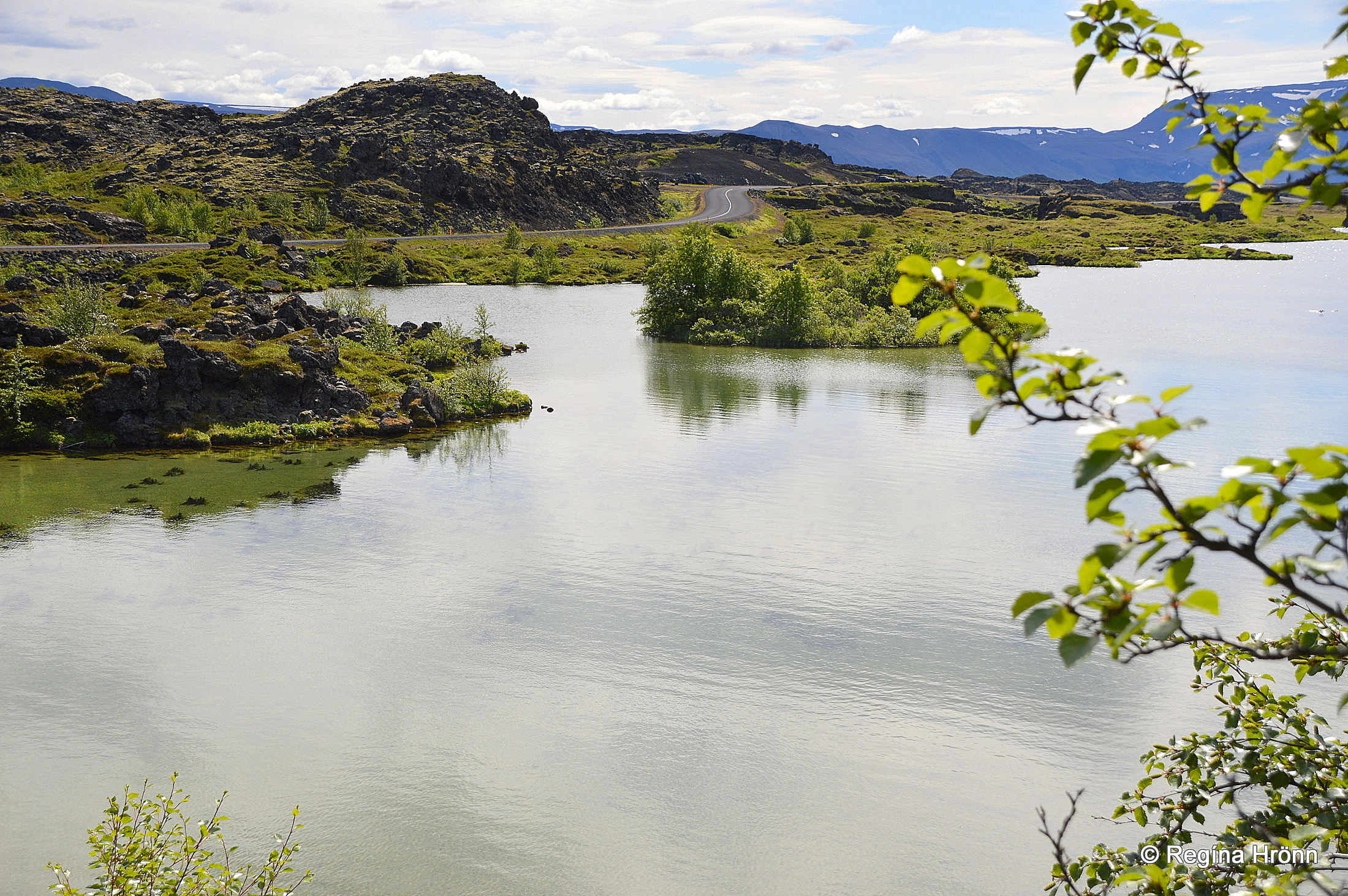
Höfði is right by Lake Mývatn
In 1970 Guðrún donated Höfði to the county in the memory of her husband and the people who had helped them planting the trees and flowers.
Thanks to these people and their hard work, we can enjoy a walk in this beautiful place with ornamental gardens and a large selection of trees and flowers.
A lovely leisurely walk all the way to the end of the peninsula will take you to a vantage point with a different view of the lava formations and lava pillars of Kálfastrandarvogar cove and Lake Mývatn.
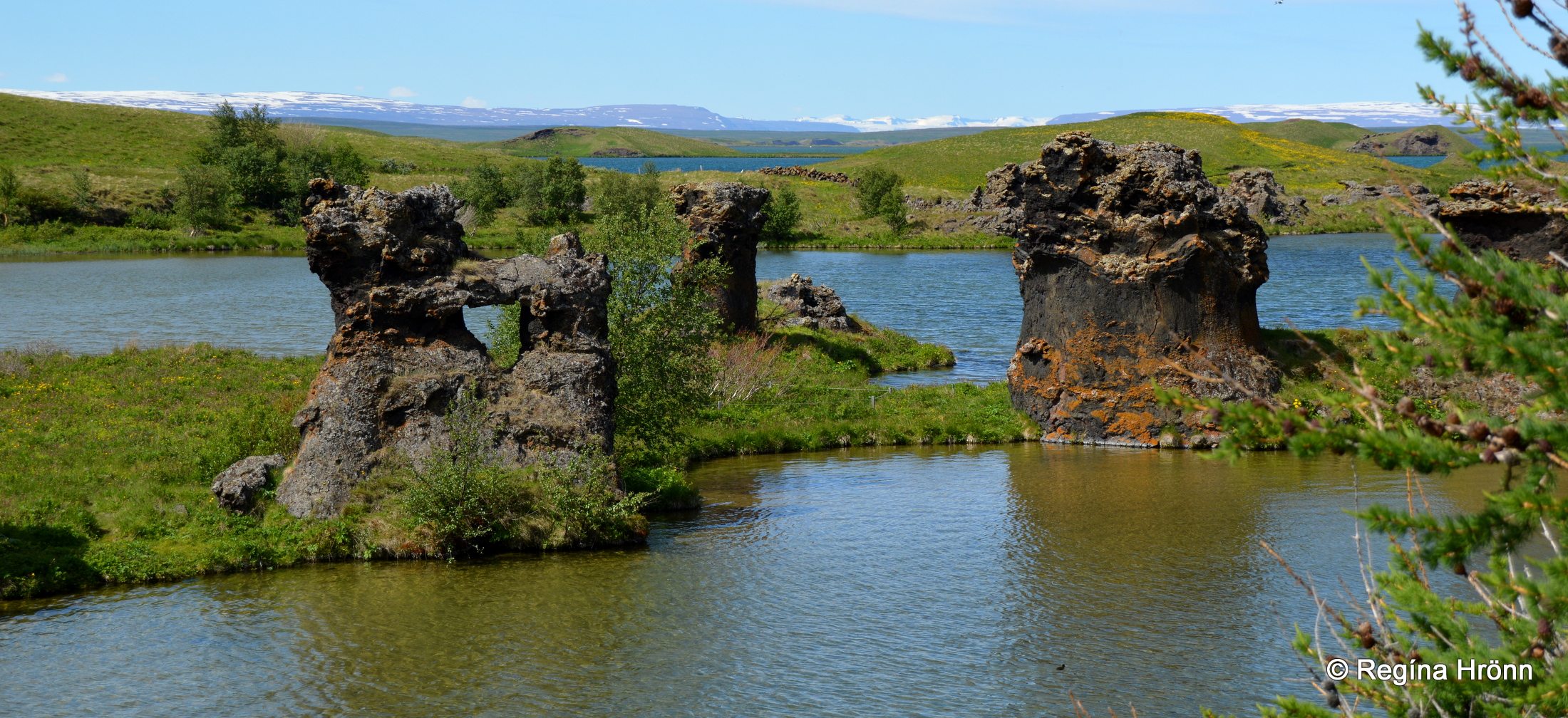
This view is the most iconic view of Mývatn and photos of the lava pillars can be seen on postcards and on boxes of Icelandic chocolate 🙂
Hverfjall explosion crater
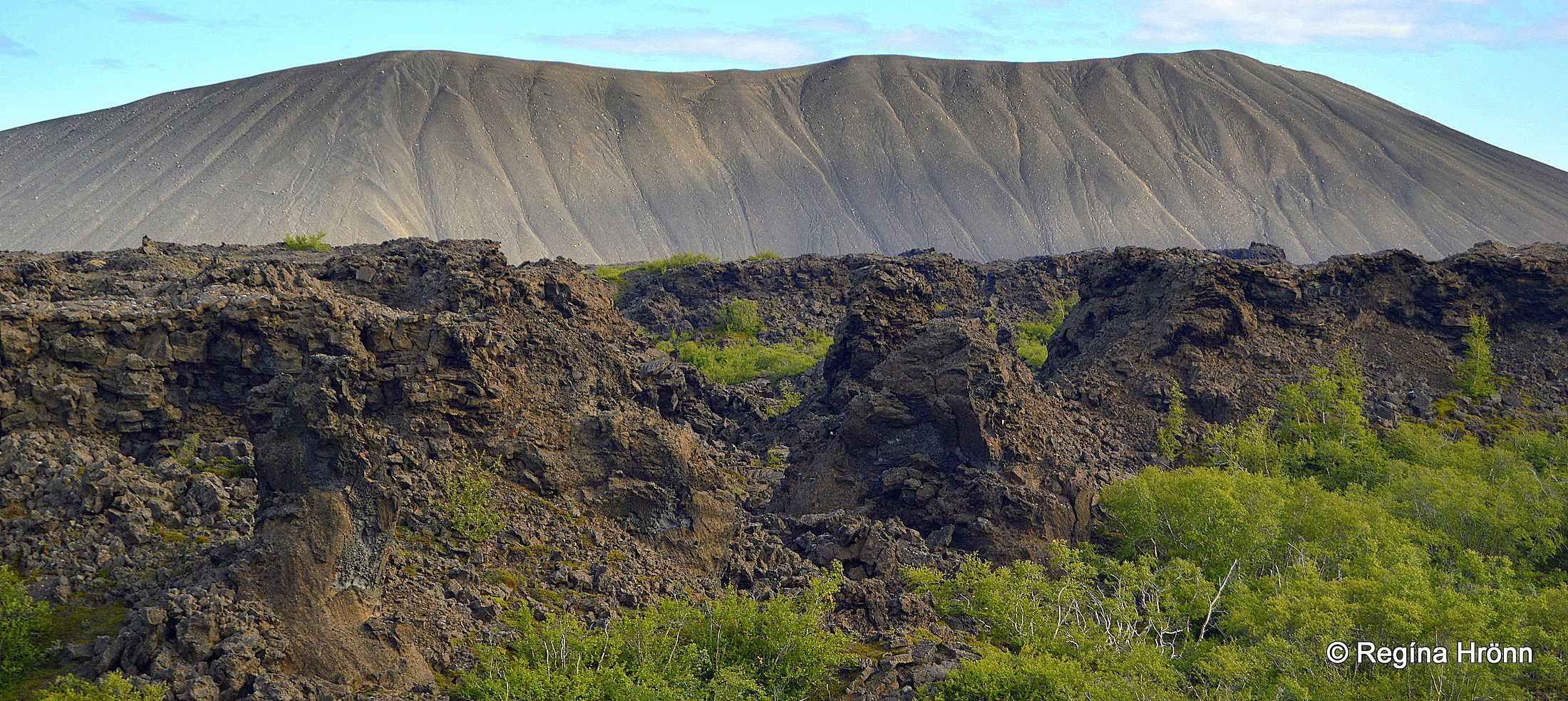
Hverfjall as seen from Dimmuborgir
Prominent in the Mývatn area is the circular explosion crater, Hverfjall or Hverfell as it can also be spelled. Mt. Hverfjall, which is 1 km in diameter at the top and 140 meters deep, exploded in an eruption some 2,500 – 3,000 years ago and it is very popular to hike on its rim.
It is very difficult to photograph it, so my photo above will have to do for now. Seen from above it is a very symmetrical crater (although not 100% symmetrical) and has the perfect crater shape, so to speak.
I have shown you another perfectly shaped crater in my travel-blog about the Eldborg Scoria Crater on Snæfellsnes in West-Iceland.
Dimmuborgir – the extraordinary lava formations at Dark Cities

Dimmuborgir
A walk through Dimmuborgir – the Dark Cities or Dark Castles is truly amazing. Here you will walk amongst huge lava pillars and lava formations, which got created in quite an extraordinary way.
Hot molten lava from Þrengslaborgir and Lúdentarborgir row of craters created these lava formations some 2,300 years ago. The molten lava created a lava pond, which formed a solidified roof as the surface area cooled down. The molten lava continued to flow into it and deepened it.
It must have been a sight to see when groundwater, trapped beneath the hot lava, boiled, and the steam formed vents and created these majestic lava pillars.
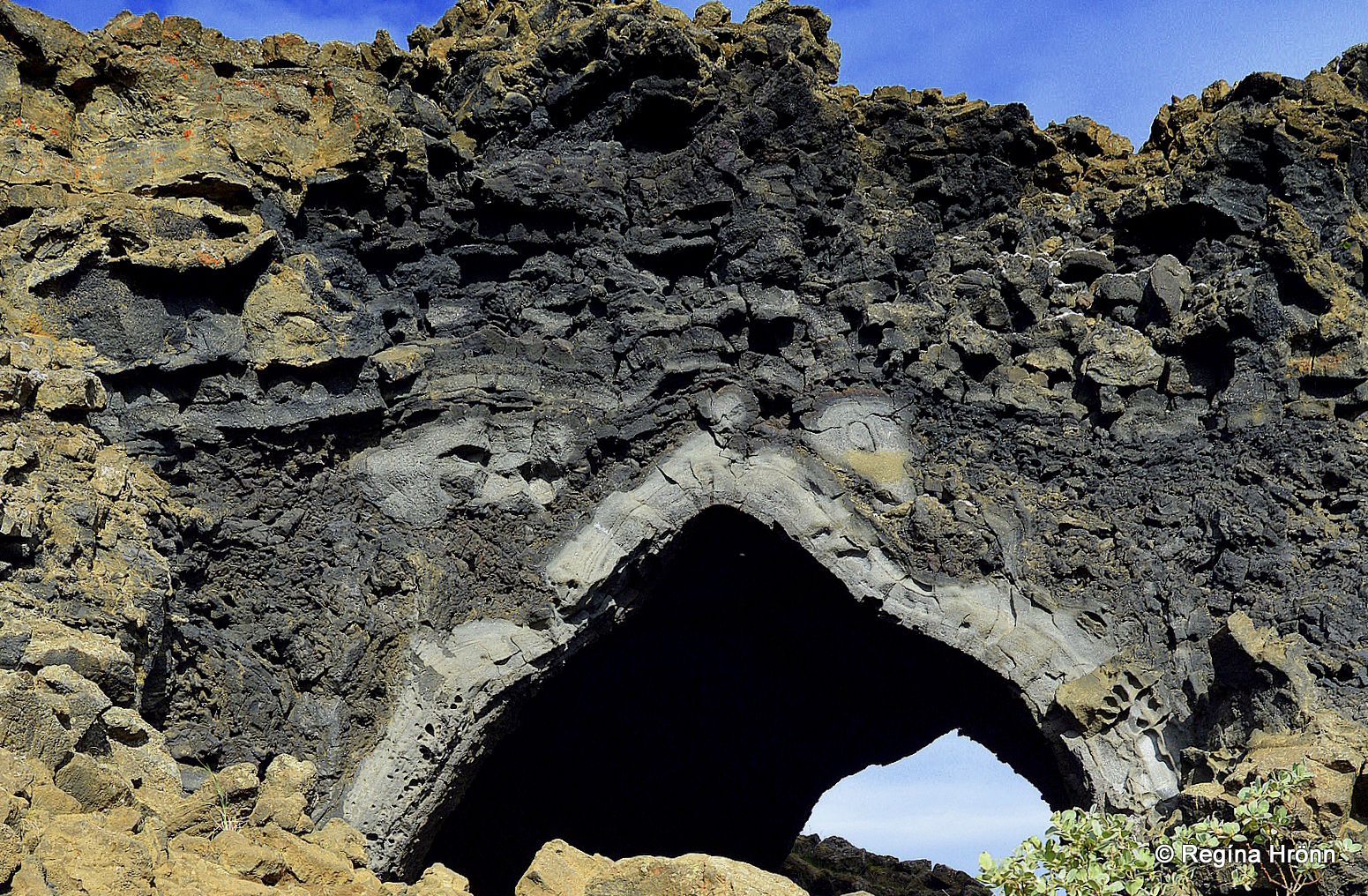
Kirkjan – the Church at Dimmuborgir
The fragile lava pillars remained standing after the lava pond had disappeared and the roof had collapsed. Due to the process of their formation, the lava pillars are brittle and thus preserved.
There are several hikes in Dimmuborgir, longer and shorter ones. Kirkjuhringurinn – the Church Route, takes you to the amazing natural lava formation Kirkjan – the Church, which is the best-known lava formation here in Dimmuborgir.
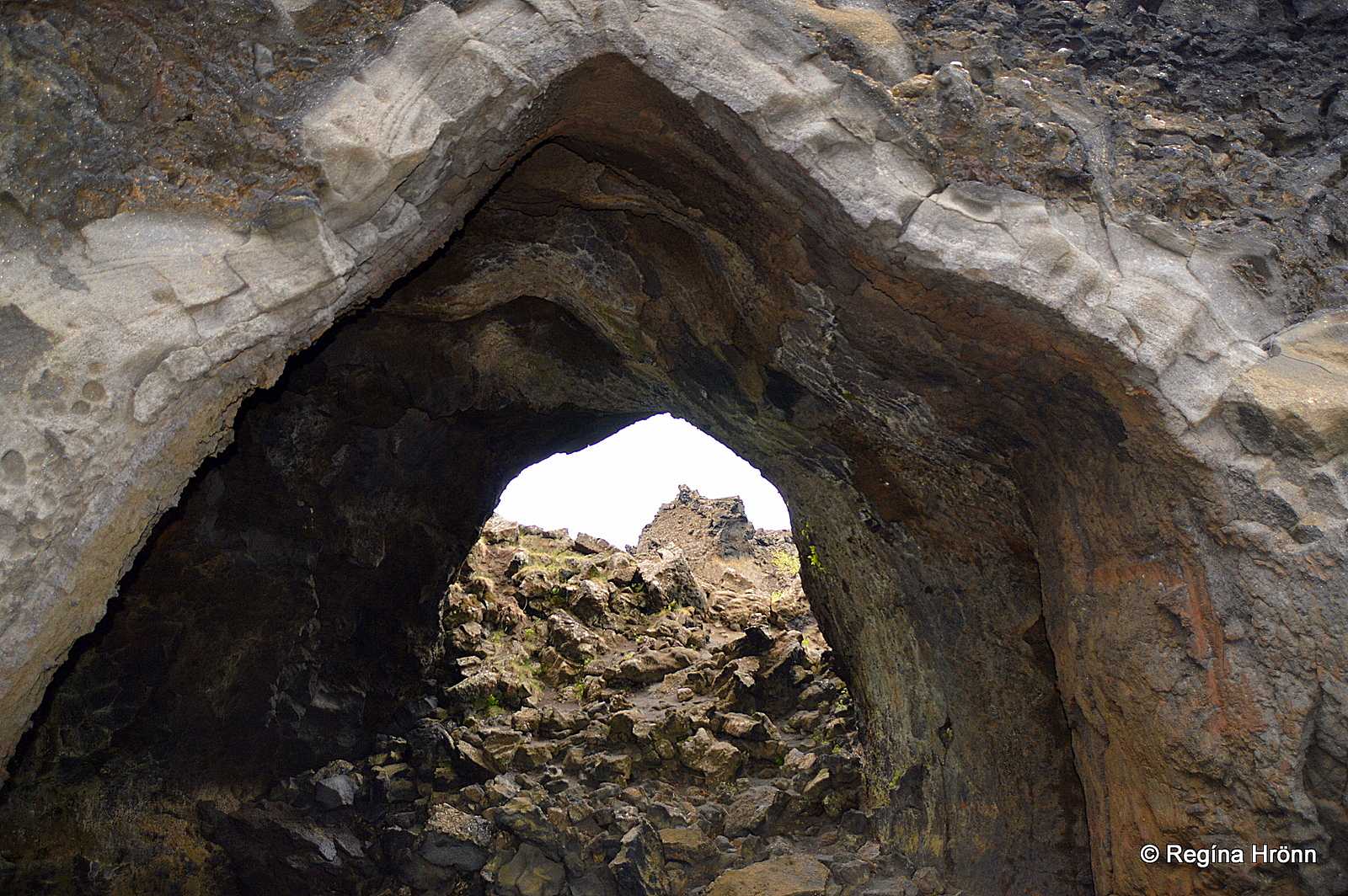
Kirkjan – the Church at Dimmuborgir
I have already shown you Kirkjan – the Church in Hljóðaklettar, but the Church in Dimmuborgir is different as it has got two openings and a high dome-shaped roof, so you can walk through it.
Kirkjan is not the only cave at Dimmuborgir as here you can also find the 2 caves of the Yule Lads.
If you don’t know who these lads are then they are 13 very ill-mannered trolls who visit the children of Iceland 13 days before and up to Christmas and leave small presents for them in a shoe which they leave on the window sill 😉
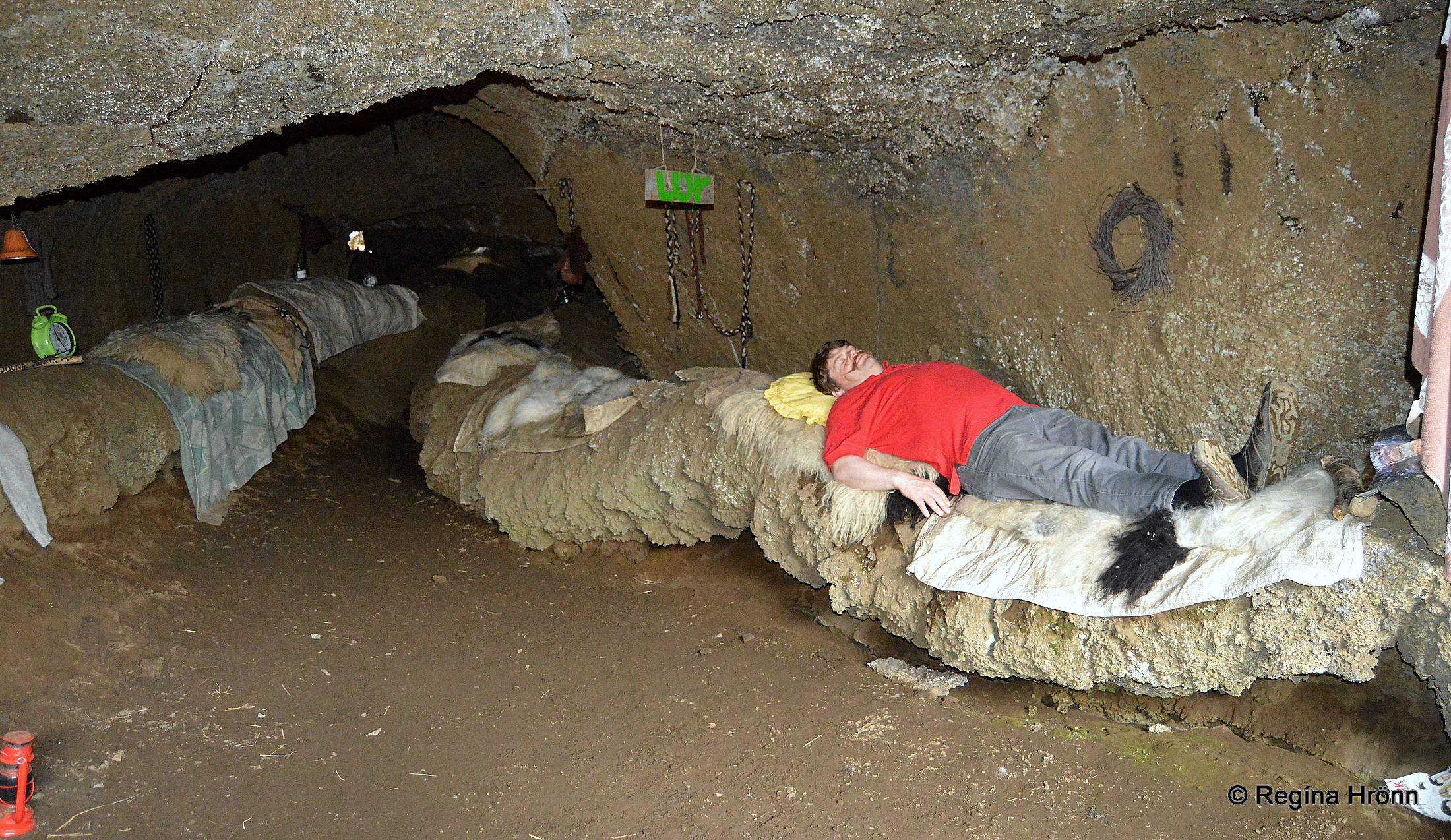
Inside the large Cave of the Yule Lads
It is easy to find the cave at Hallarflöt, where you can walk up o a small cave with a few personal items of the You Lads, but we have to search a bit for the main cave into which you descend – it feels like the Yule lads have just stepped away from home and could be expected at any minute.
Dimmuborgir for sure is a true lava labyrinth. Follow the color of the route you have chosen and keep to the paths, so you won’t get lost, as even though I have visited Dimmuborgir many times, I sometimes wonder where on earth I am when I am not totally focusing on the here and now 😉
Grjótagjá – the Love Cave
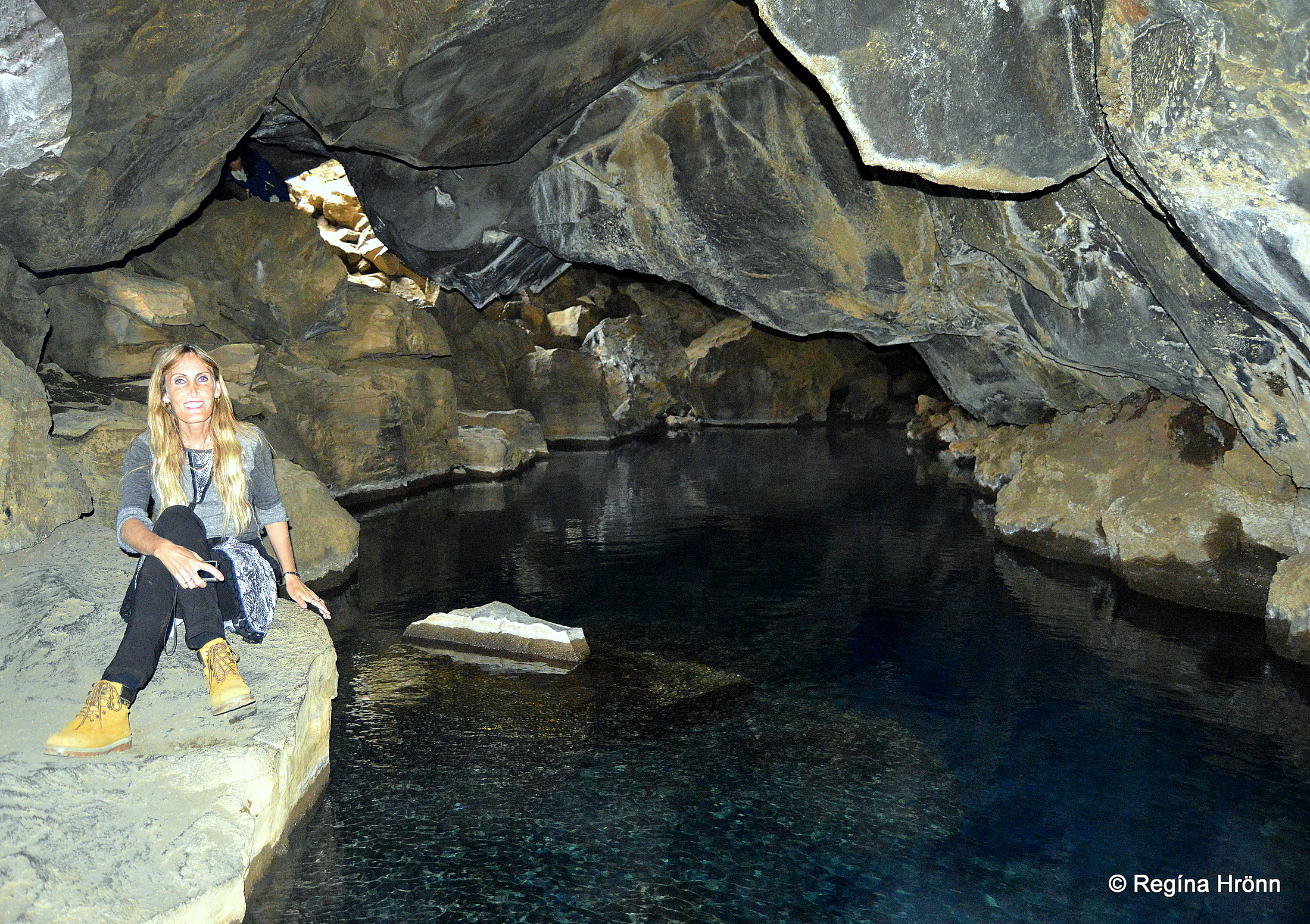
Grjótagjá – with the flash on
Grjótagjá rift is one of the wonders of the Mývatn area. It is a rift with a cave, which has become one of the best-known caves in Iceland, due to the fact that it is half-filled with hot water.
The water has got such a lovely blue color, and it was used as a bathing place by the locals for several decades, where women had one entrance and the men entered the cave through another entrance.
But during the 1975-1984 eruption of Mt. Krafla the water temperature in Grjótagjá rose up to approximately 60 degrees C! And today the water temperature is still too hot for bathing.
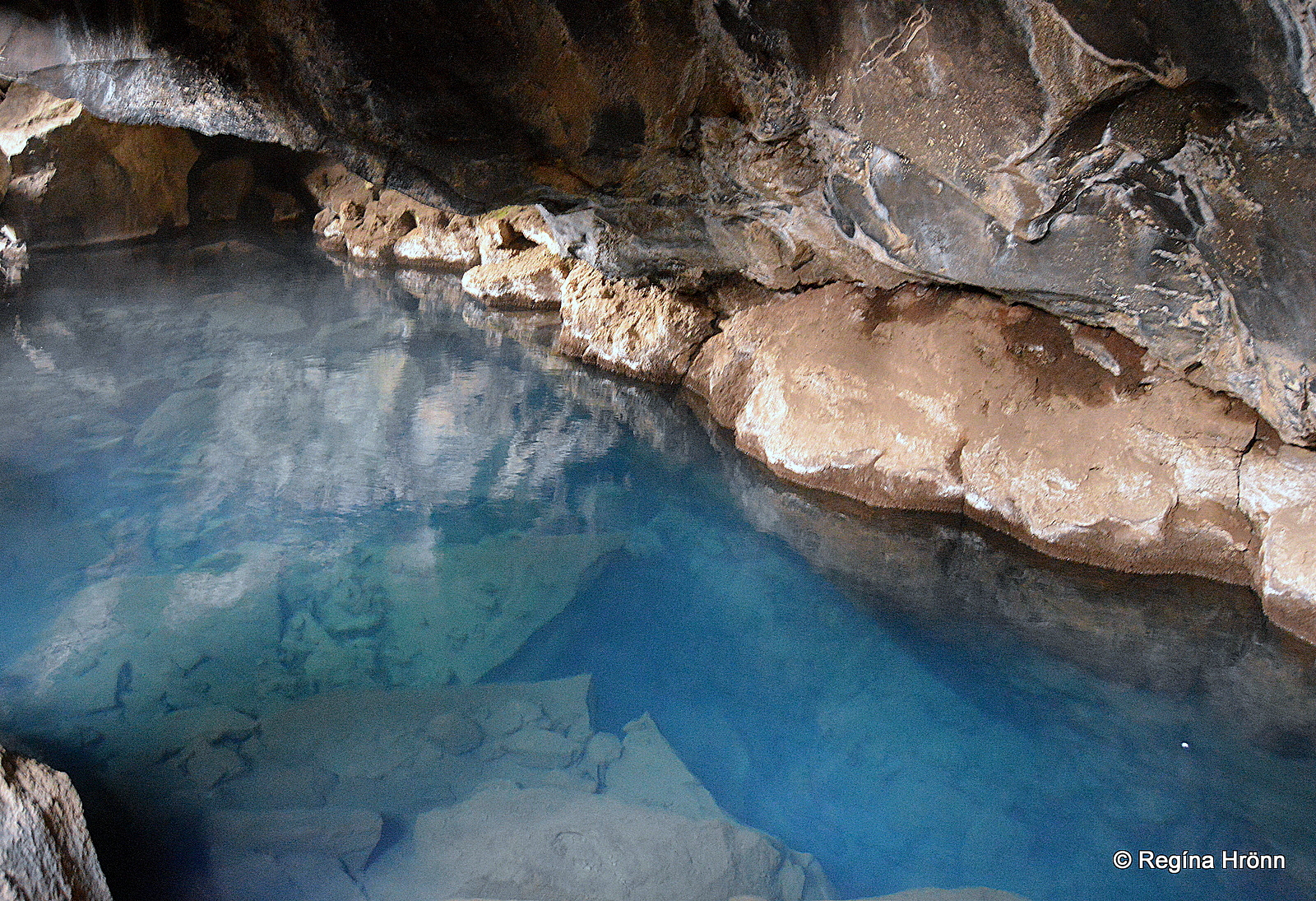
Grjótagjá without the flash
Grjótagjá is privately owned by the farmers of Vogar, but the owners gracefully allow us to have a peek inside the cave, touch the water and take photos.
Unfortunately, too many people have shown appalling behavior in Grjótagjá. Let’s be very respectful here so that we can enjoy visiting this lovely cave for years to come.
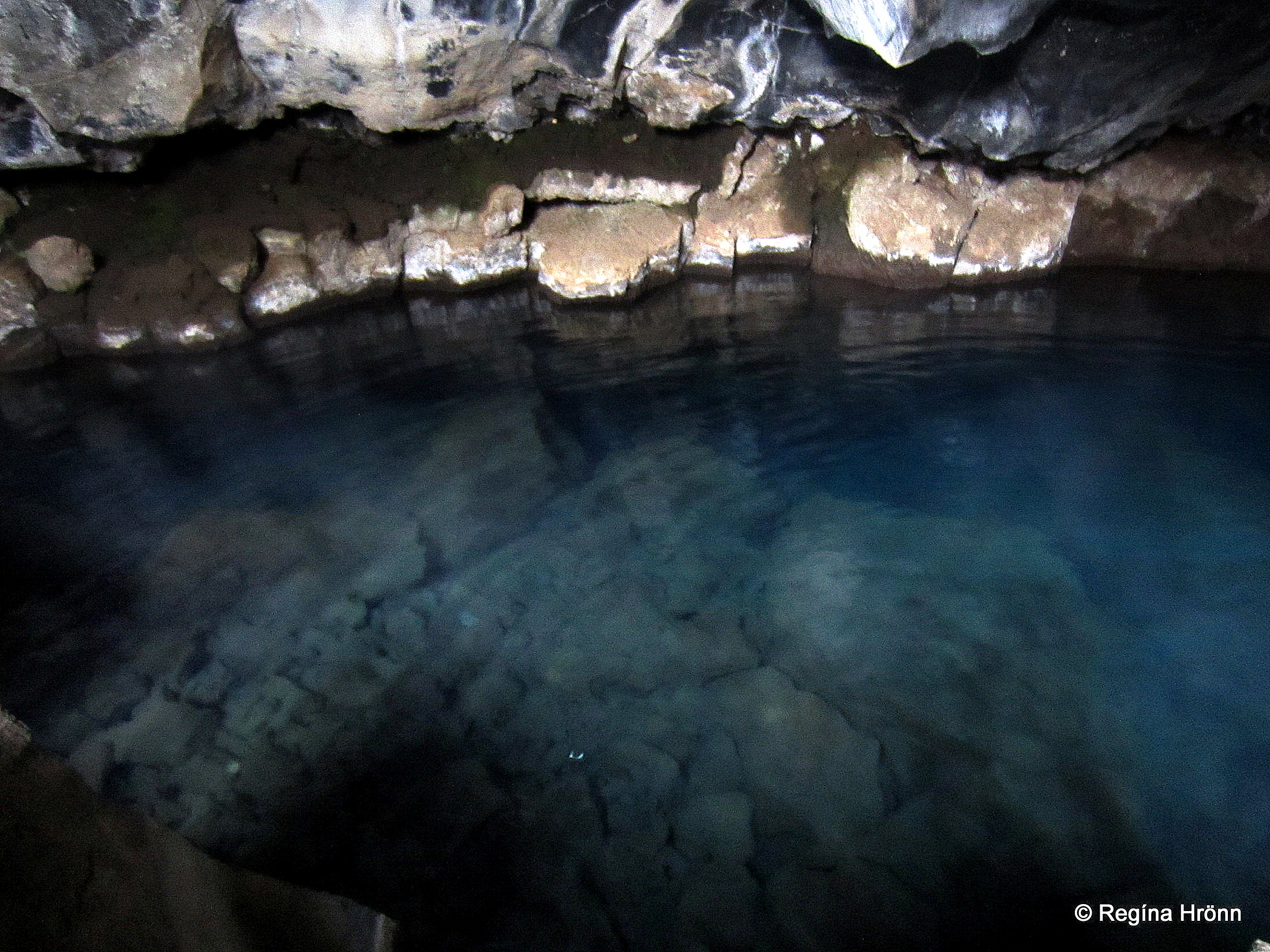
Grjótagjá cave
The nickname Love Cave for Grjótagjá originated in the Game of Thrones series as it is the location where the characters in the show Ygritte and Jon Snow supposedly made love for the first time.
Many more scenes from the series were filmed here at Mývatn, although parts of the scene at Grjótagjá were filmed in a studio.
The Mývatn Nature Baths – the Blue Lagoon of the North
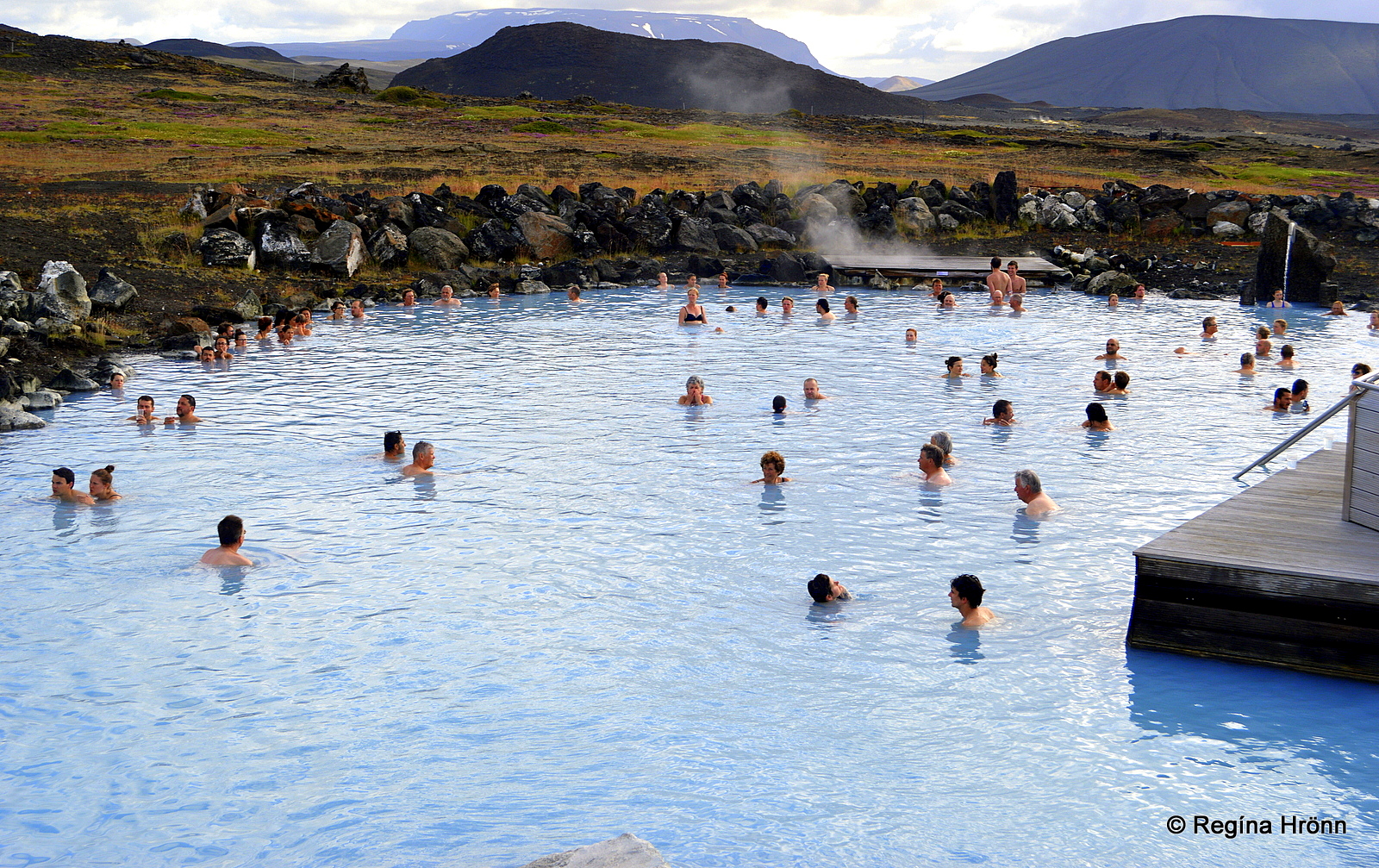
The Mývatn Nature Baths
Most people visiting Iceland have already heard about the Blue Lagoon on the Reykjanesskagi peninsula in SW-Iceland.
Here at Mývatn, you will find Jarðböðin á Mývatni – the Mývatn Nature Baths, which are often called the Blue Lagoon of the North.
These nature baths are on a smaller scale than the original Blue Lagoon, but the geothermal water, which is drawn from depths of up to 2,500 meters, is equally wonderful.
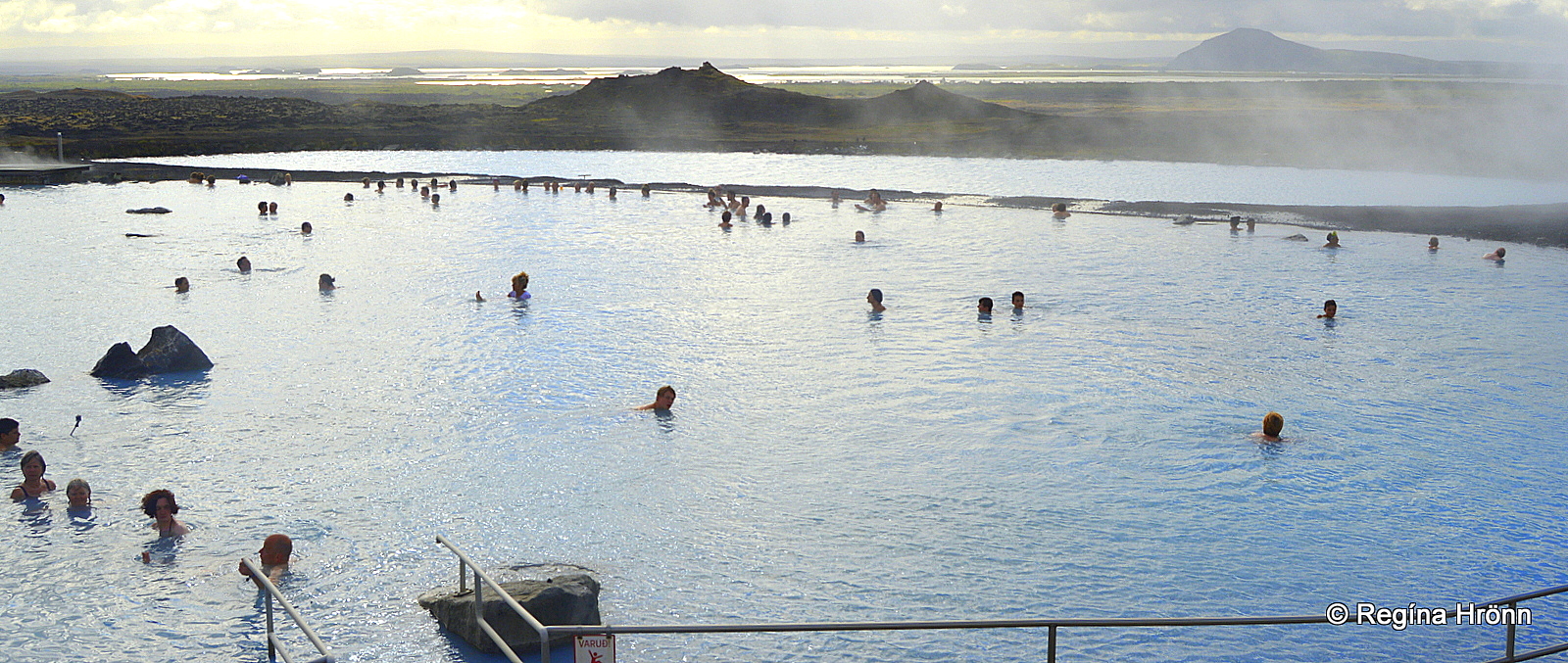
The Mývatn Nature Baths
The water is rich in silicates, trace elements, and geothermal microorganisms, which have proven to be beneficial to the skin. Just remember to take off your jewelry before entering the lagoon, as silver and brass jewelry can be affected by the sulfur in the water.
Here you are surrounded by beautiful nature and from the end of August, you might even see the Northern Lights while soaking in the lagoon.
The mountain in the upper right corner in my photo above is called Mt. Vindbelgur, a prominent mountain by Lake Mývatn. It is located by ring-road 1 and it is popular to hike on this mountain.

Mt. Námafjall and the Hverir geothermal area
Ending a busy day of exploring the many sights of the Mývatn area by relaxing in the warm water of the Mývatn Nature Baths is a perfect end to the day.
Next to the lagoon, you will notice the colorful Mt. Námafjall. This is the area which I will be showing you in my next travel-blog: the wonders of nature which Mt. Námafjall, the colorful Hverir geothermal area, Leirhnjúkur, and the Krafla area have to offer.
Note that the major sights of Mývatn, which I have been showing you in this travel-blog, are located by road 848, which joins road number 1 by Reykjahlíð.
Have a lovely time at Mývatn 🙂
